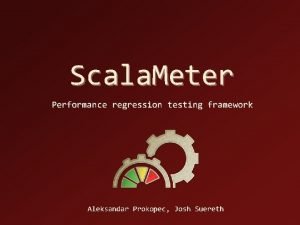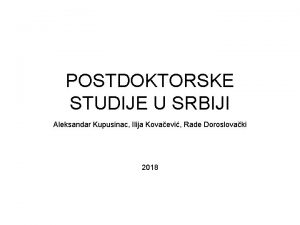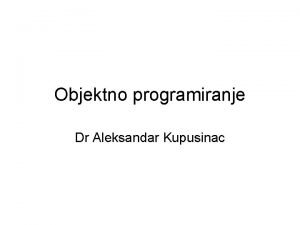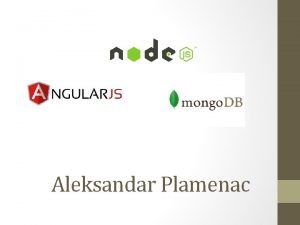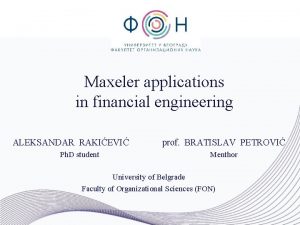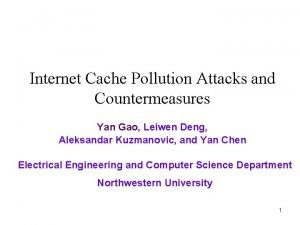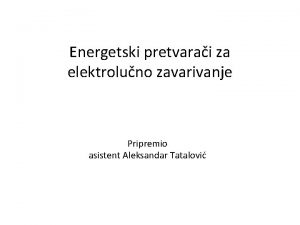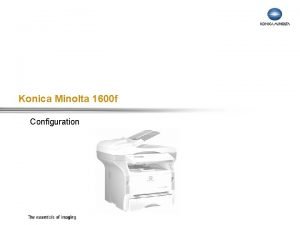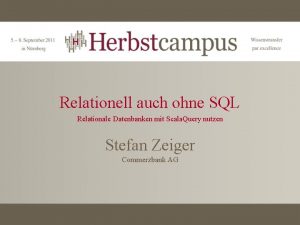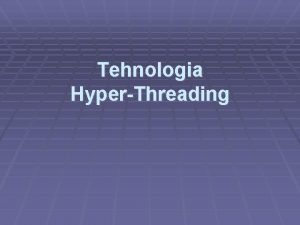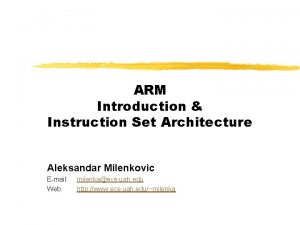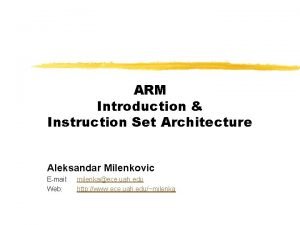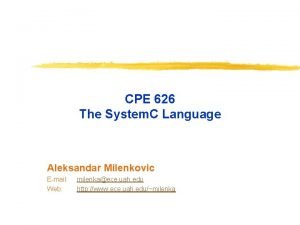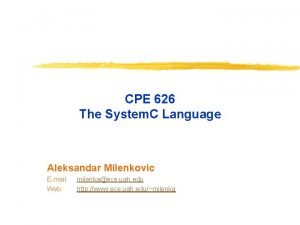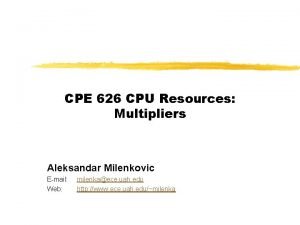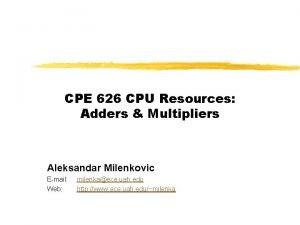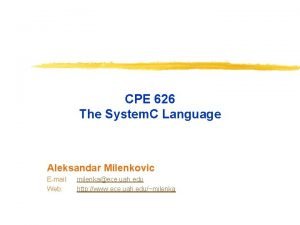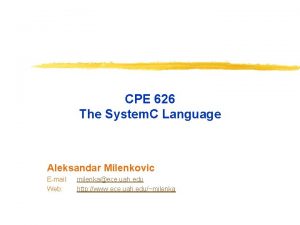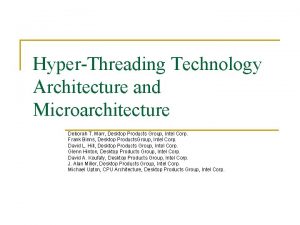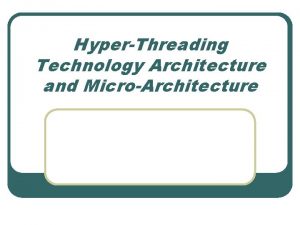Hyperthreading Technology Aleksandar Milenkovic Electrical and Computer Engineering

















- Slides: 17

Hyperthreading Technology Aleksandar Milenkovic Electrical and Computer Engineering Department University of Alabama in Huntsville milenka@ece. uah. edu www. ece. uah. edu/~milenka/

Outline n n n What is hyperthreading? Trends in microarchitecture Exploiting thread-level parallelism Hyperthreading architecture Microarchitecture choices and trade-offs 9/30/2020 A. Milenkovic 2

What is hyperthreading? n SMT - Simultaneous multithreading – Make one physical processor appear as multiple logical processors to the OS and software Intel Xeon for the server market, early 2002 n Pentium 4 for the consumer market, November 2002 n Motivation: boost performance for up to 25% at the cost of 5% increase in additional die area n 9/30/2020 A. Milenkovic 3

Trends in microarchitecture n Higher clock speeds – To achieve high clock frequency make pipeline deeper (superpipelining) – Events that disrupt pipeline (branch mispredictions, cache misses, etc) become very expensive in terms of lost clock cycles n ILP: Instruction Level Parallelism – Extract parallelism in a single program – Superscalar processors have multiple execution units working in parallel – Challenge to find enough instructions that can be executed concurrently – Out-of-order execution => instructions are sent to execution units based on instruction dependencies rather than program order 9/30/2020 A. Milenkovic 4

Trends in microarchitecture n Cache hierarchies – Processor-memory speed gap – Use caches to reduce memory latency – Multiple levels of caches: smaller and faster closer to the processor core n Thread-level Parallelism – Multiple programs execute concurrently • Web-servers have an abundance of software threads • Users: surfing the web, listening to music, encoding/decoding video streams, etc. 9/30/2020 A. Milenkovic 5

Exploiting thread-level parallelism n CMP – Chip Multiprocessing – Multiple processors, each with a full set of architectural resources, reside on the same die – Processors may share an on-chip cache or each can have its own cache – Examples: HP Mako, IBM Power 4 – Challenges: Power, Die area (cost) n Time-slice multithreading – Processor switches between software threads after a predefined time slice – Can minimize the effects of long lasting events – Still, some execution slots are wasted 9/30/2020 A. Milenkovic 6

Exploiting thread-level parallelism n Switch-on-event multithreading – Processor switches between software threads after an event (e. g. , cache miss) – Works well, but still coarse-grained parallelism (e. g. , data dependences and branch mispredictions are still wasting cycles) n SMT – Simultaneous multithreading – Multiple software threads execute on a single processor without switching – Have potential to maximize performance relative to the transistor count and power 9/30/2020 A. Milenkovic 7

Hyperthreading architecture One physical processor appears as multiple logical processors n HT implementation on Net. Burst microarchitecture has 2 logical processors n Architectural State Processor execution resources 9/30/2020 Architectural state: - general purpose registers - control registers - APIC: advanced programmable interrupt controller A. Milenkovic 8

Hyperthreading architecture n Main processor resources are shared – caches, branch predictors, execution units, buses, control logic n Duplicated resources – register alias tables (map the architectural registers to physical rename registers) – next instruction pointer and associated control logic – return stack pointer – instruction streaming buffer and trace cache fill buffers 9/30/2020 A. Milenkovic 9

Die Size and Complexity 9/30/2020 A. Milenkovic 10

Resources sharing schemes n Partition – dedicate equal resources to each logical processors – Good when expect high utilization and somewhat unpredicatable n Threshold – flexible resource sharing with a limit on maximum resource usage – Good for small resources with bursty utilization and when the micro-ops stay in the structure for short predictable periods n Full sharing – flexible with no limits – Good for large structures, with variable working -set sizes 9/30/2020 A. Milenkovic 11

Shared vs. partitioned queues shared 9/30/2020 partitioned A. Milenkovic 12

Net. Burst Pipeline threshold partitioned 9/30/2020 A. Milenkovic 13

Shared vs. partitioned resources n Partitioned – E. g. , major pipeline queues n Threshold – Puts a threshold on the number of resource entries a logical processor can have – E. g. , scheduler n Fully shared resources – E. g. , caches • Modest interference • Benefit if we have shared code and/or data 9/30/2020 A. Milenkovic 14

Scheduler occupancy 9/30/2020 A. Milenkovic 15

Shared vs. partitioned cache 9/30/2020 A. Milenkovic 16

Performance Improvements 9/30/2020 A. Milenkovic 17
 Tijana milenkovic
Tijana milenkovic Erika milenkovic
Erika milenkovic Klipsch school of electrical and computer engineering
Klipsch school of electrical and computer engineering Tum department of electrical and computer engineering
Tum department of electrical and computer engineering System procurement process in software engineering
System procurement process in software engineering Aleksandar prokopec
Aleksandar prokopec Aleksandar kupusinac
Aleksandar kupusinac Objektno programiranje
Objektno programiranje Aleksandar plamenac
Aleksandar plamenac Aleksandar rakicevic
Aleksandar rakicevic Aleksandar kuzmanovic flashback
Aleksandar kuzmanovic flashback Aleksandar tatalovic
Aleksandar tatalovic Aleksandar nikcevic
Aleksandar nikcevic Aleksandar baucal
Aleksandar baucal Configurator konica minolta
Configurator konica minolta Aleksandar kartelj
Aleksandar kartelj Vjenčanje europe i azije
Vjenčanje europe i azije Aleksandar prokopec
Aleksandar prokopec





